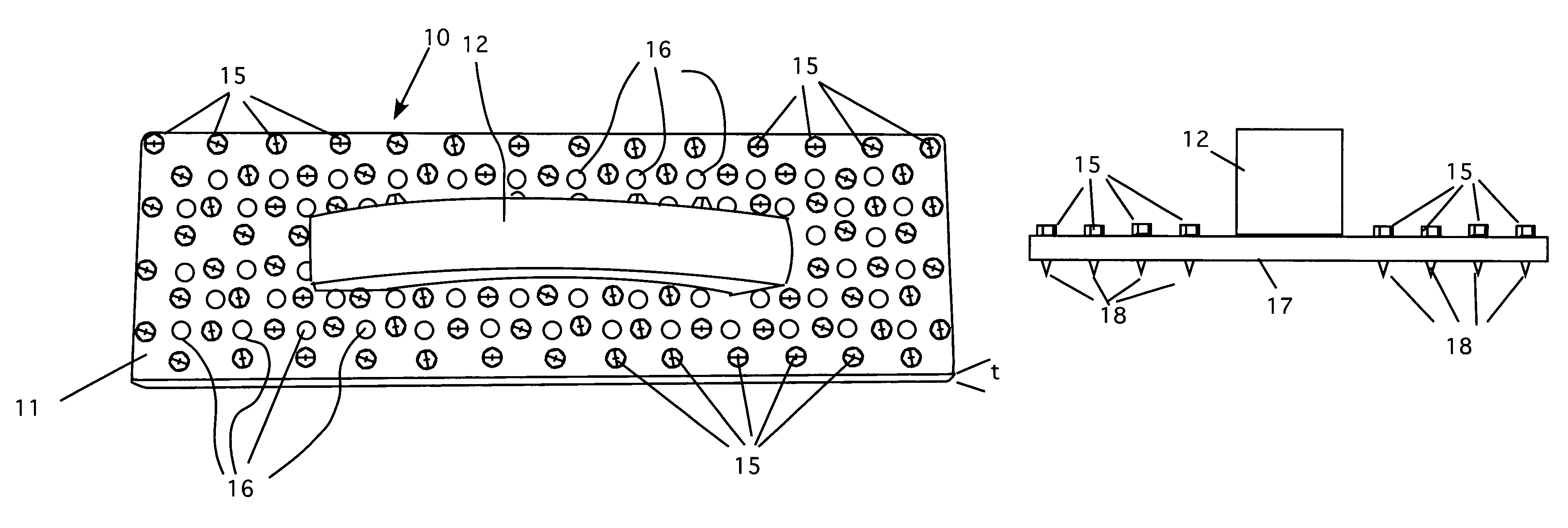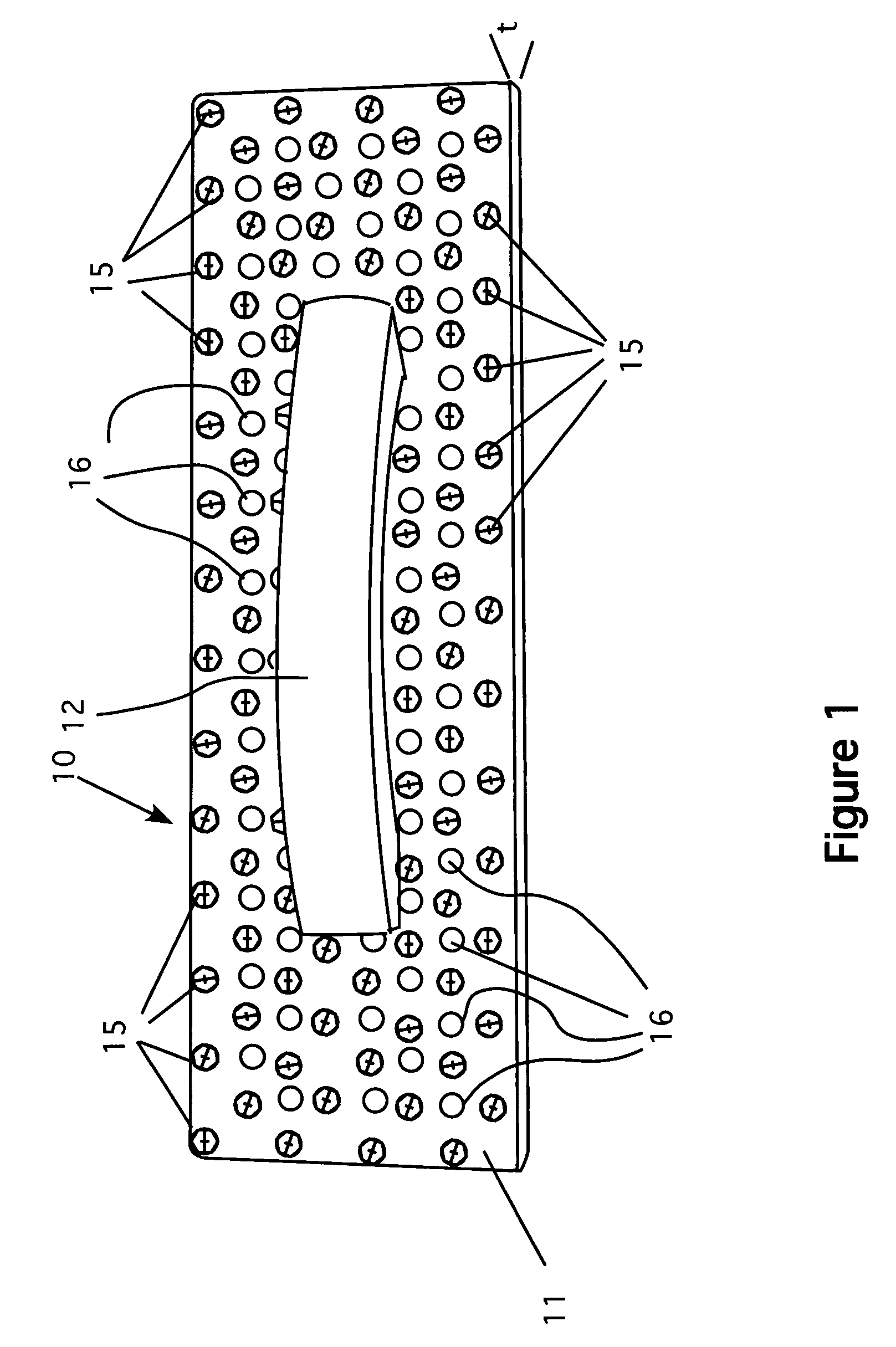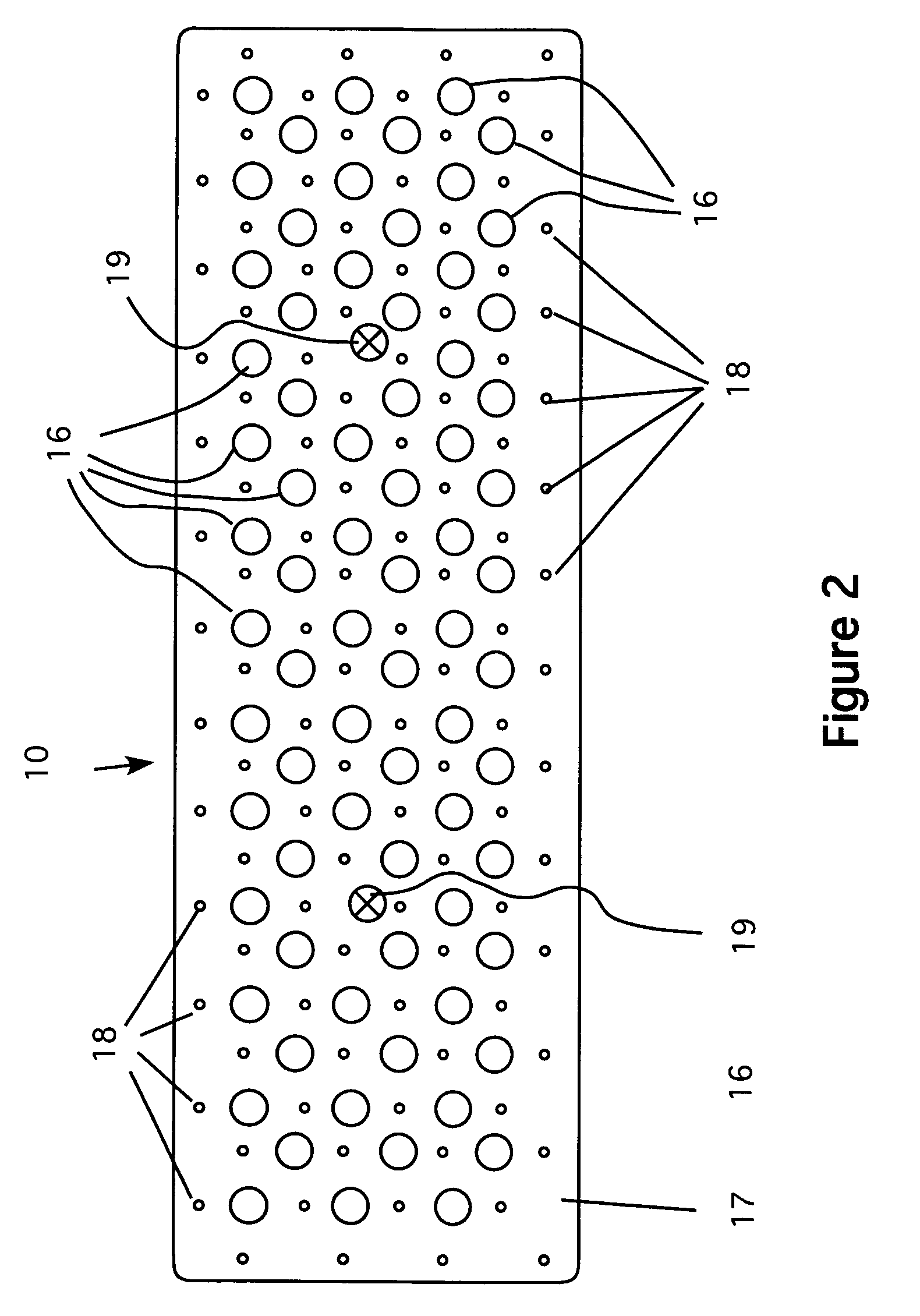Foam rasp
a polystyrene and foam technology, applied in the field of foam rasps, can solve the problems of affecting the use of the surface of the sheet, the seam between the sheets is usually uneven, and the standard rasp is likely to get clogged and worn down, so as to reduce friction during use, eliminate the hydroplaning effect, and reduce the effect of friction
- Summary
- Abstract
- Description
- Claims
- Application Information
AI Technical Summary
Benefits of technology
Problems solved by technology
Method used
Image
Examples
Embodiment Construction
[0026]Referring now to FIG. 1, a top perspective view of my new hand rasp 10 is shown. Although it is shown with a generally rectangular form, which is preferred, it can be made to any desired shape. Moreover, it can be made to any length. In one model, the rasp is four feet long and is rectangular. However, that is a matter of design choice. The mounting plate 11 has a thickness t to accommodate the length of a number of screws, which act as abrasive elements. The thickness t must be large enough to ensure that the screws have a good purchase in the plate, but not so large as to overly restrict the length of the screw tips, as discussed below. A handle 12 is shown attached to the mounting plate. The shape of the handle can be varied, but ideally, the preferred handle shape has an ergonomic design that allows for comfortable use of the tool for extended periods. The screws 15 are positioned throughout the surface of the plate in a uniform pattern. Note that in the preferred embodime...
PUM
 Login to View More
Login to View More Abstract
Description
Claims
Application Information
 Login to View More
Login to View More - R&D
- Intellectual Property
- Life Sciences
- Materials
- Tech Scout
- Unparalleled Data Quality
- Higher Quality Content
- 60% Fewer Hallucinations
Browse by: Latest US Patents, China's latest patents, Technical Efficacy Thesaurus, Application Domain, Technology Topic, Popular Technical Reports.
© 2025 PatSnap. All rights reserved.Legal|Privacy policy|Modern Slavery Act Transparency Statement|Sitemap|About US| Contact US: help@patsnap.com



